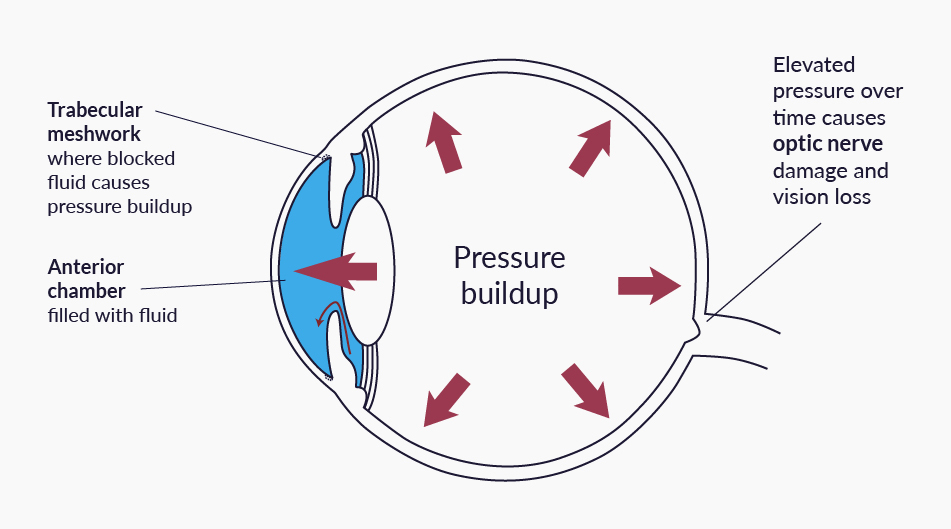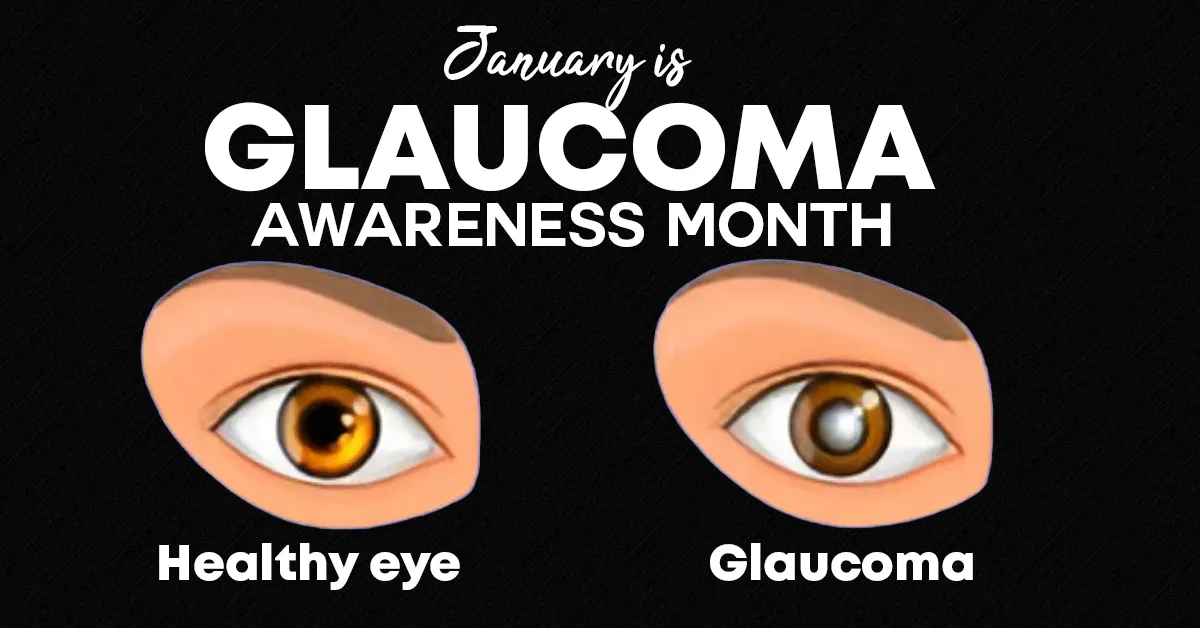January is recognized each year as Glaucoma Awareness Month, this age-related eye disease impacts the lives of nearly 3 million Americans over the age of 40 (and particularly over the age of 60). This month is a great opportunity to raise awareness of the risk factors and signs of glaucoma, which can ultimately cause gradual blindness.
What is Glaucoma?
Glaucoma affects the optic nerve within your eyes, gradually damaging its ability to function correctly and impacting the way your eyes carry images to your brain. Because of this glaucoma can often start without any pain and begin to gradually cause blindness.
There are multiple types of glaucoma that patients can experience. These include…
Open-angle Glaucoma: Symptoms develop very late, when damage is already severe. Blind spots first appear in the peripheral vision. This can potentially be caught with regular eye exams.
Angle-closure Glaucoma: Like open-angle, it is common for symptoms to appear relatively late. This type of glaucoma is associated with headaches, eye redness, blurred vision, seeing “halos”, and nausea.
Normal-tension Glaucoma: Patients with this type of glaucoma have normal eye pressure, but still have blind spots and other symptoms consistent with glaucoma.
There are many other types of glaucoma each with their unique characteristics – learn more here.
What is the “eye pressure” that causes Glaucoma?
Elevated pressure in your eyes is believed to be a contributing factor to glaucoma as this pressure can damage your optic nerve and cause vision loss.
The fluid in question is between the outer layer of the eye, and your iris (the part of your eye that is colored). Fluid should pass between these layers and drain out the eye. When the fluid is unable to drain effectively, the build-up of fluid causes pressure. The National Eye Institute has a diagram of what this looks like.

If your body is producing an overabundance of fluid for your eyes or is unable to drain the fluid efficiently, for whatever reason, you may experience high eye pressure.
High eye pressure is not to be confused with high blood pressure. However, having high blood pressure is believed to be a contributing risk factor for glaucoma.
What is the cure/treatment for Glaucoma?
Unfortunately, there is no current cure for glaucoma, but proper medical treatment can aid in seriously slowing down the spread of the disease. The effectiveness of the medication is dependent on early diagnosis and what type of glaucoma is being treated.
What’s my risk?
It is estimated that over 3 million individuals are living with glaucoma, but half of those patients are undiagnosed. As the second leading cause of blindness worldwide, increased screening and awareness are necessary to help catch glaucoma’s development as early as possible.
Patients who have a family history of glaucoma or a history of high blood pressure are at increased risk and should encourage others in their family to attend annual eye exams as well.
Does Glaucoma only impact part of your field of vision or does it cause complete blindness?
This can vary from person to person and is dependent on the type of Glaucoma. According to Prevent Blindness: “Usually, Glaucoma affects side vision (peripheral vision) first. As a result, Glaucoma may cause ‘tunnel vision’ late in the disease. In this condition, the person can only see straight ahead. That’s why someone with Glaucoma can have good central vision.”
How can you get involved?
As always, donations can go a long way in supporting the Glaucoma Research Foundation as they work towards finding a cure. Above all else, it is important to encourage your family members to receive regular eye checks if they feel they have pressure on their eyes, are losing vision, or have a history of Glaucoma in your family. Early detection and proper treatment can go a long way in preserving an individual’s vision.


